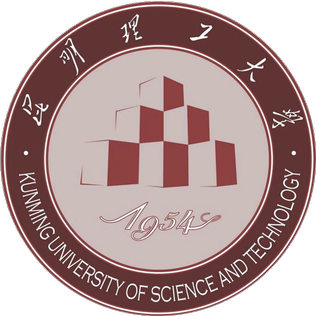
Kunming University of Science and Technology
Green Education Ranking
#812
About Kunming University of Science and Technology
Kunming University of Science and Technology(KUST), located in Kunming, Yunnan Province, southwest of China, was founded on the 4th of September, 1954. KUST has become a comprehensive, engineering-orientated university that combines theory with application and coordinates multiple disciplines. As one of the key universities in Yunnan province, KUST plays an important role in the field of the non-ferrous metals industry in China and makes major contributions to regional, economic, and social development. Several subjects of KUST were listed in the top 1% in ESI, including Engineering, Material Science, Chemistry,Environment/Ecology, Botany and Zoology, Agricultural Science, Clinical Medicine. KUST has 1 academic division, 28 faculties, 7 research institutes, 14 clinical teaching bases (including 10 affiliated hospitals, 3 teaching hospitals, and 1 hospitals for internships), 3 bases for applied talent-training, and graduate schools. Furthermore, KUST has 4,103 staff members, including 2,850 full-time lecturers and 1,827 professors and associate professors. 127 people are granted national talent titles, such as “academicians of the Chinese Academy of Sciences and Chinese Academy of Engineering”, “Changjiang scholar”, and “Distinguished Young Scholar”. 921 people own other provincial- and ministerial-level talent titles, such as “leading talent of science and technology in Yunnan Province” and “Yunling Scholar”. Currently, KUST is home to more than 53,000 students (including 583 overseas students), and among them, there are 32,923 undergraduate students (including 198 overseas students), and 19,354 graduate students (including 385 overseas students). Based on its distinctive disciplines and unique location, KUST keeps strengthening international cooperation and communication. As of now, it has signed cooperation agreements with 110 colleges, universities, and research institutions in 36 countries and regions and built a Confucius Institute with Souphanouvong University in Laos. It is the leading university in the cooperation between universities in Yunnan province and Thailand and has set up 3 colleges in Thailand. It is listed as the new base for the Programme of Introducing Talents of Discipline to Universities. The foreign experts in KUST have won the International Science and Technology Cooperation Award and the Friendship Award issued by the Chinese government. Now it has played a unique and important role in cultivating engineers and talented managers, and offering international technical transfer for neighbouring countries, as well as establishing high-level cooperation on research and communication between teachers and students with developed countries.
About World Green University Ranking
World
Green University Ranking 2024 is a
scholarly acknowledgment of educational
institutions standing at the forefront of
Education for Sustainable Development (ESD) and
leading the Green Education Transformation
(Education 6.0).
World Green University Ranking classifies
universities based on the six pillars of the
Holistic Green Education Framework, including
leadership governance, curriculum, innovation,
facilities, human capital, and community
partnerships.
The methodology employed in our Green Education Ranking is designed relying on the six pillars of the Holistic Green Education Framework. Each pillar contributes to the institution’s overall score, with a carefully assigned weight reflecting its significance in fostering sustainability. The total weight of the six pillars collectively amounts to 100%, signifying a balanced evaluation across critical dimensions of Green Education. Within each pillar, various standards are carefully assessed, with weights ranging between 1 and 2, emphasizing the varying importance of each criterion. This nuanced approach ensures a holistic evaluation and offers an insightful measure of universities commitment to Green Education Transformation (Education 6.0).
| # | Six Pillars of Green Education Framework (6Gs). | Weight |
|---|---|---|
| 1 | Green Educational Leadership | 14% |
| 2 | Green Curriculum | 17% |
| 3 | Green Innovation and Research | 19% |
| 4 | Green Facilities | 15% |
| 5 | Green Human Capital | 19% |
| 6 | Green Communities | 16% |
| Total | 100% |

